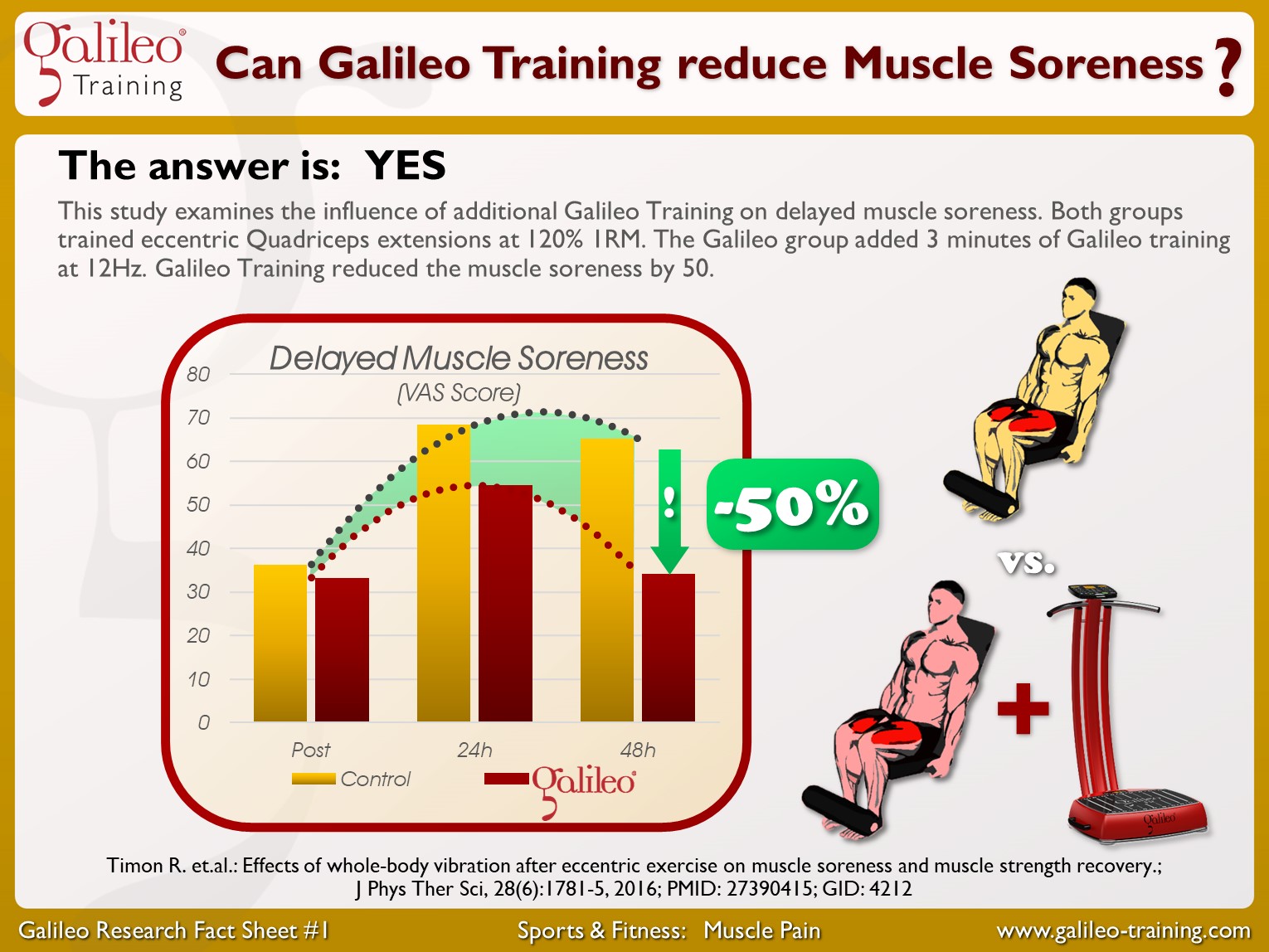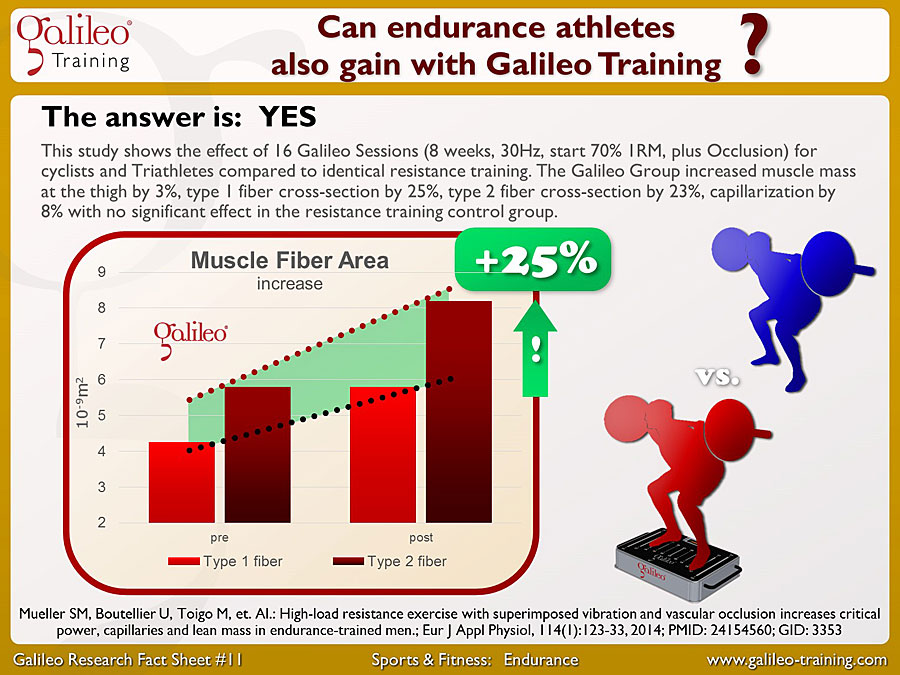GALILEO® Therapy
after a stroke
The consequential damage after a stroke not only affects individual muscles, but also their interaction (coordination) in particular, which is important for posture and movement. In addition to the loss of muscle strength and muscle power, there is also usually an altered body perception. Movements as well as the muscle tone are usually disturbed or movements or partial movements can often no longer be carried out voluntarily.
Under the guidance of an experienced therapist, Galileo can be used to train the muscles and effectively control spasticity and muscle tone. Due to the high number of repetitions during the Galileo application, residual functions can be activated more quickly. In particular, the wobble function of the current device generation was designed especially for this field of application.

Galileo® devices after stroke





Galileo® Med L Plus
Robust technology and versatile functionality for intensive individual therapy


Do you have questions about our products or would you like to purchase a product?
Let our experts advise you. Simply arrange a non-binding consultation.
Galileo® after stroke
Therapeutic goals after stroke:
- Improvement of postural and movement control
- Faster activation of residual functions
- De-toning & reduction of spasticity (spasticity management)
- Maintain and improve muscle strength & power
- Perception improvement (postural and positional sense)
- Initiation of movement patterns
- Restoration of body symmetry by rhythmic right/left movement of the therapy platform
- Improvement of balance reactions and reaction speed and thus fall prophylaxis
- Prevention of inactivity-related subsequent impairments or functional degradation

MANY REPETITIONS IN A SHORT PERIOD OF TIME
The high rate of neuromuscular stimulation during Galileo therapy can significantly support motor learning according to the principle of repetition. The high number of repetitions in a short time is therefore a central point for learning success with Galileo. The vibration frequency defines the primary therapy goal of each individual exercise with Galileo. Therefore, frequency, but also foot position and joint position or posture are adapted by the therapist to the respective abilities and therapy goals of the patient are chosen. Galileo can thus improve coordination, body awareness, posture control, balance and muscle power, for example.

VIBRATION THERAPY
The side-alternating original - Galileo was the world's first side-alternating vibration training device. The first patents for Galileo systems, which have since expired, were registered by the company's founder Hans Schießl as early as 1996. A study* with Galileo equipment in 1998 also coined the term vibration training (or Whole Body Vibration Training, WBV), on which Galileo Vibration Therapy is based. Galileo has 25 years of experience in vibration training and the resulting vibration therapy. Variants of vibration training or vibration therapy are also called acceleration training, vibration training or stochastic resonance training or resonance therapy (SRT) - here a clear distinction must be made between training and therapeutic devices. The main mechanical differences between the various devices and methods result from the type of movement of the plate (side-alternating - Galileo, vertical, horizontal rotation or random), the maximum deflection (amplitude or stroke = amplitude * 2) and the vibration frequency. In addition, a distinction must be made between training equipment and therapy equipment. Depending on the type of movement used, there can be major advantages and disadvantages. *) Bosco et. al: The Influence of Whole Body Vibration on Jumping Performance, BoS,1998;15/3:157-164
Galileo® Med L
The model for many different therapeutic areas of application
Silent
Silent operation
Hand rail
Practical optional holding bracket with integrated transport wheels
Wobbel
Randomly changing frequencies, crucial for balance training
Chip Card
Individual user profiles & ready-made training plans
Smart Coaching
Automatic frequency adjustment in case of incorrect posture
Remote control
Wobble remote control for quick and easy frequency adjustment

Functional principle of the
Galileo® Therapy
Neuromuscular training therapy with Galileo
- Side-alternating vibration
- Vibration therapy
- Movement pattern
- Gentle, reflex-based therapyGentle, reflex-based therapy
- Frequency & Amplitude

SIDE ALTERNATING VIBRATION
The principle of Galileo standing devices is based on the natural movement of human gait. The Galileo therapy platform works like a seesaw with variable amplitude and frequency due to its side-alternating movement form, which stimulates a movement pattern similar to the human gait. The rapid rocking movement of the therapy platform causes a tilting movement of the pelvis just like walking, but much more frequently. To compensate, the body reacts with rhythmic muscle contractions, alternating between the left and right side of the body. From a frequency of about 10 hertz, these muscle contractions are not voluntary but reflex-controlled via the so-called stretch reflex, which activates the muscles in the legs, abdomen and back all the way up into the torso. The number of stretch reflexes per second is determined by the adjustable stimulation frequency. If, for example, a stimulation frequency of 25 hertz is selected, 25 contraction cycles each occur per second in the flexor and extensor muscles. A therapy session of 3 minutes at 25 hertz thus corresponds to the same number of muscle contractions per leg, as a walk of 9,000 steps. The vibrations generated by the Galileo therapy platform can be easily changed in amplitude and frequency independent of body weight.

MOVEMENT PATTERNS
Galileo therapy platforms simulate human gait through the rocking movement, and represent a therapy method based on a physiological type of motion, in contrast to other platforms with vertical up and down movement. This side-alternating movement in Galileo therapy stimulates the spine by tipping the pelvis slightly to the side in a physiological tilting movement. On training platforms with vertical up and down movement, on the other hand, the spine is continuously compressed. Due to this physiological stimulation of the spine, the side-alternating function of Galileo can also reach the back and abdominal muscles. This is also only possible to a very limited extent on therapy platforms with vertical up and down movement - i.e. not side-alternating movement. In all their movements, people strive to keep their heads in a still and upright position, as their sense of balance and visual system can work better at rest. Due to the design, only minor vibrations are transmitted to the head with Galileo standing devices, as the platform only simulates the human gait, and the body can keep the upper body and head largely still.

GENTLE, REFLEX-BASED THERAPY
Since stimulus patterns similar to those used during walking are employed during Galileo therapy on standing devices, Galileo can be used to excellently stimulate the interaction between individual muscle parts - i.e. their coordination. In addition to the basic muscle function itself, this can also result in an increase in muscle power. Especially in old age, muscle power is a decisive factor in preventing falls, which can cause fractures of the femur, for example. Galileo therapy is also excellent for older people due to its low stress (load) on the cardiovascular system. During Galileo therapy, the entire muscle chain of the legs up to the torso can always be activated. Emphasis on individual muscle groups can be easily varied through posture and body stiffness.

FREQUENCY UND AMPLITUDE
The frequency in Hertz (= oscillations per second) is adjusted on the device and must always be selected according to the therapy goal of the respective exercise. For example, low frequencies can be used for mobilisation or proprioception, medium frequencies for training muscle function and coordination, and high frequencies for increasing muscle power and endurance. The amplitude, i.e. the deflection of the training platform from the neutral position upwards or downwards, can be selected easily and continuously via the foot position. The wider the foot position, the more intensive the therapy. The stroke, on the other hand, is the maximum deflection (difference between the highest and lowest position, or peak-to-peak value and thus corresponds to twice the amplitude).
Galileo® Med CHAIR
Side alternating muscle stimulation of the trunk muscles Optimised for wheelchair users
Wobbel
Therapy with randomly changing frequencies for additional neurological effects and relaxation of the musculature
Functional Stimulation
From relaxation of the back muscles to back mobilisation and trunk stability.
Seated application
Releasing tension in the back muscles simply while sitting.
Remote control
Wobble remote control for quick and easy frequency adjustment


Do you have questions about our products or would you like to purchase a product?
Let our experts advise you. Simply arrange a non-binding consultation.
Let Galileo® Therapy convince you!
Numerous scientific studies prove the effectiveness of therapy with Galileo.
Benefit from the knowledge gained from 25 years of experience and from over 500 scientific publications on Galileo worldwide.
















